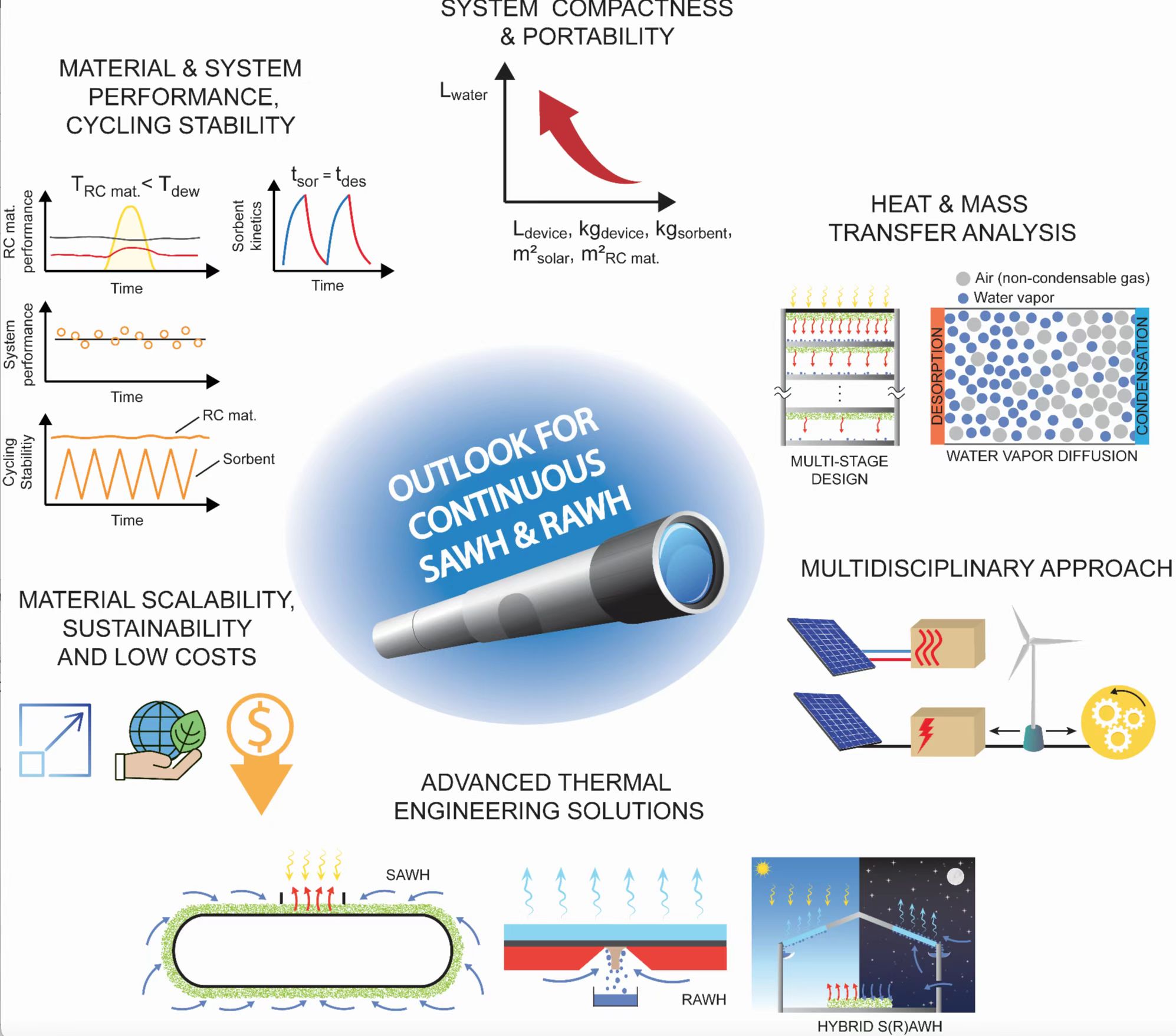Water scarcity affects four billion people all over the world. To alleviate this challenge, the atmosphere holding six times the total volume of rivers worldwide emerges as a sustainable source of water. Harvesting the ubiquitous water from the air can provide sustainable water production regardless of the climates and locations, showing the great potential in landlocked and arid areas.
Recently, researchers from the Energy-Water-Air interdisciplinary innovation team ITEWA led by Professor Ruzhu Wang from School of Mechanical Engineering, Shanghai Jiao Tong University published a perspective paper titled Sustainable water generation: Grand challenges in continuously atmospheric water harvesting in Energy & Environmental Science (IF=39.714). This perspective provides a critical overview of recent batch and continuously operated adsorption and radiative sky cooling devices, with a focus on future advancements on material and system levels. Based on exposed scientific and research gaps authors delivered a comprehensive range of possible development paths for future advancement of continuously operated sorption- and radiative sky cooling atmospheric water harvesting (AWH). The first author is Primož Poredoš, a postdoctoral fellow at the Institute of Refrigeration and Cryogenics, and the corresponding author is Prof. Ruzhu Wang.

The perspective focuses on the future development and challenges of continuous AWH at both material and system levels and gives possible future directions to address continuous water generation. At the materials level, the authors discuss the current mismatch between adsorption and desorption rates for all available adsorbent materials, which make it difficult to meet the fast adsorption and desorption characteristics required for continuously operating systems. Improving the adsorption kinetics becomes one of the key future challenges to achieving a continuously operating system. In addition, the authors consider the importance to investigate new mechanisms related to adsorbents, i.e., studying the interactions between water molecules, adsorbents, and different energy sources.
At the system level, future designs of adsorption continuously operating AWH systems should aim at increasing the compactness of the systems and further balancing the mismatch between adsorption and desorption rates. By analyzing the inherent limitations of the total water production and compactness of the existing continuous and batch operating AWH systems, the authors propose a strategy on a system level to match the adsorption and desorption kinetics by using different areas devoted to adsorption and desorption, leading to virtually equalized adsorption and desorption rates to achieve higher water production and efficiency. The authors propose that the use of materials with an anisotropic thermal conductivity as well as an oriented pore structure that can lead to additional mass and energy efficiency and also enhance this effect.
The AWH system designs using radiative sky cooling materials on the other hand should focus on the cooling energy concentration provided by the radiative cooling materials, i.e., to achieve concentrated high cooling power in a smaller area to trigger the water droplet formation at lower humidity. In addition, special attention should be paid to the overall thermal management of the radiative water harvester. The parasitic heat gains from the ambient can be greatly reduced by introducing additional radiative shielding and insulation, and additionally deploying sun shields to reduce the solar radiation intensity, leading to the increased overall cooling performance of the system, and hence water production.
Paper Link: https://doi.org/10.1039/D2EE01234K

